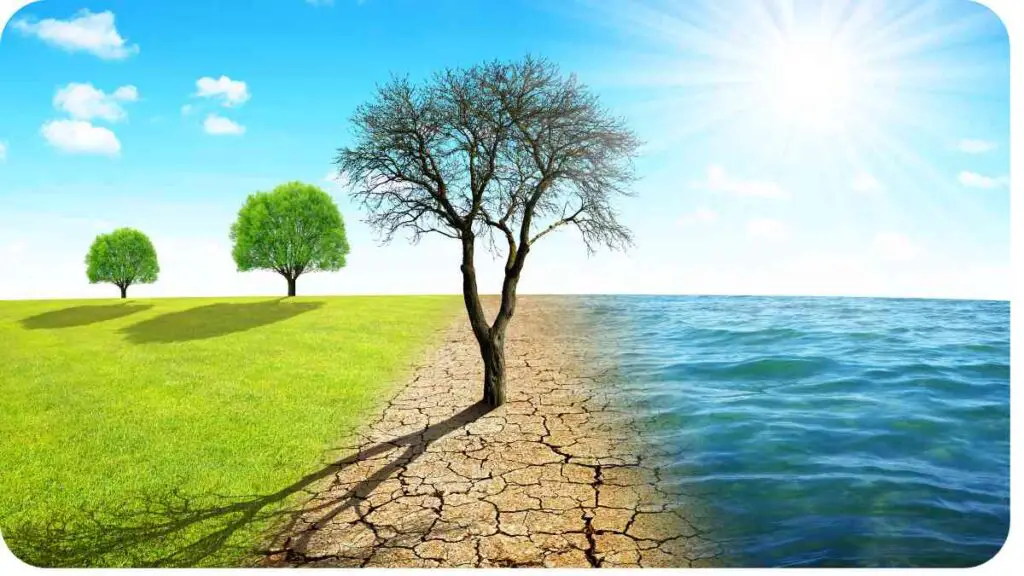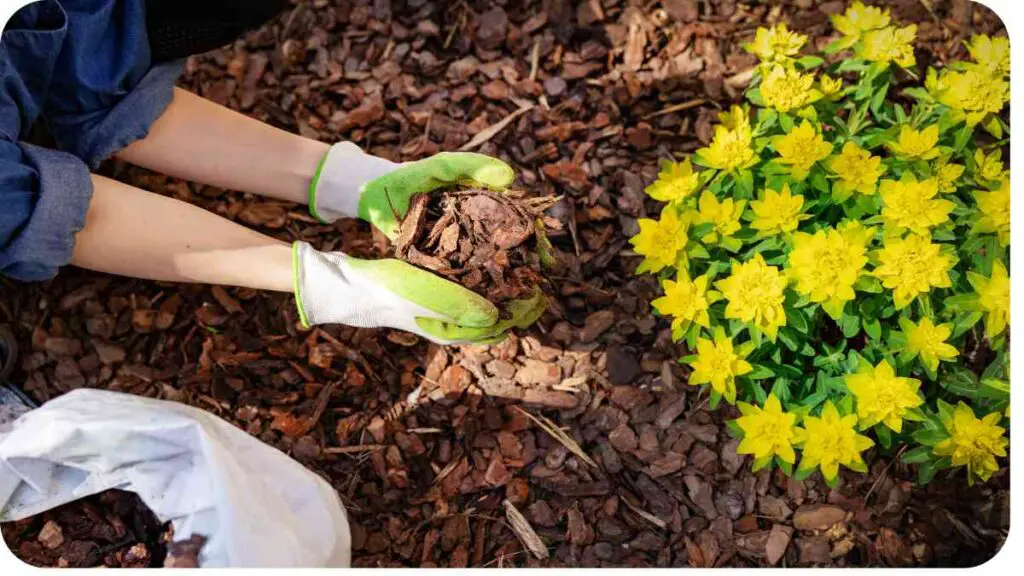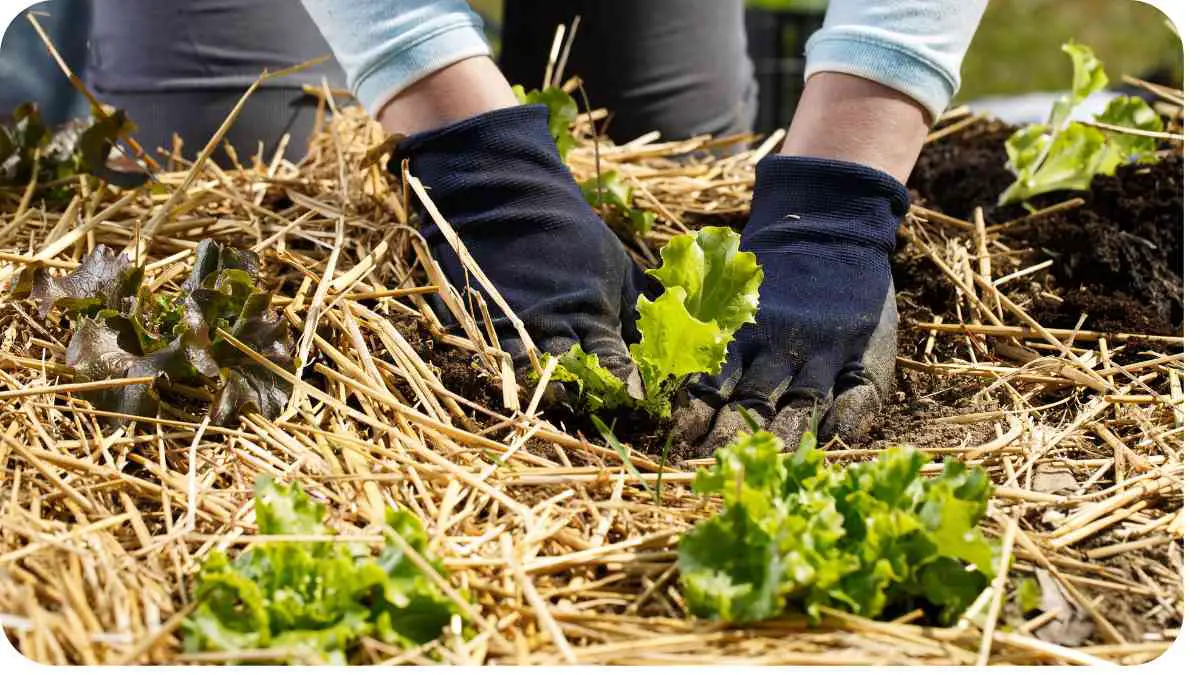Gardening in a desert climate presents a unique set of challenges that can daunt even the most seasoned green thumbs. With scorching temperatures, minimal rainfall, and nutrient-poor soil, cultivating a thriving garden might seem like an impossible feat.
However, armed with the right knowledge and strategies, you can transform your arid landscape into a verdant oasis. In this comprehensive guide, we’ll explore the distinctive hurdles of desert gardening and provide practical tips and solutions to help you nurture a lush and flourishing garden.
| Takeaways |
|---|
| 1. Gardening in a desert climate presents unique challenges such as water scarcity, extreme temperatures, and poor soil quality. |
| 2. Strategies for successful desert gardening include selecting drought-tolerant plants, implementing efficient irrigation techniques, and improving soil quality through composting and soil amendment. |
| 3. Choosing the right plants, such as succulents, cacti, and native species, is crucial for thriving in a desert climate. |
| 4. Mulching and providing shade are essential practices for conserving soil moisture and regulating temperatures in a desert garden. |
| 5. Creating microclimates within your garden can optimize growing conditions for different plant species and enhance overall plant health and productivity. |
| 6. Utilizing technology, such as drip irrigation systems and soil moisture sensors, can help gardeners manage water resources more efficiently and maintain healthy gardens in desert climates. |
| 7. Seeking support from local garden clubs, cooperative extension programs, and online gardening communities can provide valuable guidance and resources for desert gardeners. |
| 8. Learning from success stories and case studies of fellow desert gardeners can inspire and inform your own gardening journey. |
| 9. Frequently asked questions cover topics such as watering frequency, plant selection, and available resources for learning more about desert gardening. |
| 10. Further reading materials provide additional resources for exploring common challenges, soil quality, and tips for successful desert gardening. |
Understanding Desert Climates

Before delving into the specific challenges of gardening in a desert climate, let’s take a closer look at what defines these regions. Desert climates are characterized by low precipitation levels, high temperatures, and wide daily temperature fluctuations. These harsh environmental conditions pose significant obstacles to traditional gardening practices, requiring gardeners to adapt and innovate to thrive in such landscapes.
Hydroponic vegetables offer pristine quality and safety, making them a reliable choice for health-conscious individuals. Explore the safety of hydroponic vegetables in your diet and embrace a healthier lifestyle today.
Desert Climate Characteristics Table
| Characteristic | Description |
|---|---|
| Low Precipitation Levels | Annual rainfall often falls below 10 inches, resulting in arid or semi-arid conditions. |
| High Temperatures | Daytime temperatures can soar well above 100°F (38°C), while nighttime temperatures may drop significantly. |
| Wide Temperature Fluctuations | The diurnal temperature range can be substantial, with hot days and cool nights. |
Unique Challenges of Gardening in a Desert Climate
Gardening in a desert climate comes with its own set of hurdles that require creative solutions and careful planning. Let’s explore some of the most prominent challenges:
Water Scarcity
One of the primary challenges of desert gardening is the scarcity of water. With minimal rainfall and high evaporation rates, it’s crucial to implement efficient irrigation methods and water conservation techniques to ensure that your plants receive an adequate supply of moisture.
Extreme Temperatures
Desert climates are characterized by extreme temperatures, with scorching hot days and chilly nights. These temperature fluctuations can stress plants and impact their growth and development. Finding resilient plant varieties that can withstand these extremes is essential for successful desert gardening.
Poor Soil Quality
The soil in desert regions is often nutrient-poor and lacks organic matter, posing challenges for plant growth. Improving soil quality through composting, mulching, and soil amendment is critical to provide plants with the necessary nutrients and support their health and vitality.
Curious about the sweetness of hydroponic strawberries? Delve into the intriguing world of hydroponic farming and discover the secrets behind their sweetness for yourself. Elevate your culinary experience with these flavorful delights!
Unique Challenges Table
| Challenge | Description |
|---|---|
| Water Scarcity | Limited availability of water due to low precipitation levels and high evaporation rates. |
| Extreme Temperatures | Wide fluctuations between daytime heat and nighttime cold, which can stress plants. |
| Poor Soil Quality | Nutrient-poor soil lacking organic matter, requiring amendments for plant growth and vitality. |
Strategies for Successful Desert Gardening

Overcoming the challenges of gardening in a desert climate requires strategic planning and the implementation of specialized techniques. Here are some effective strategies to help you cultivate a thriving garden in arid conditions:
Drought-Tolerant Plants
Choosing drought-tolerant plants that are adapted to arid environments is essential for conserving water and maintaining a resilient garden. Look for species native to desert regions or those with adaptations such as succulence or deep root systems.
Efficient Irrigation Techniques
Optimize your irrigation practices to minimize water wastage and ensure that plants receive adequate moisture. Drip irrigation, soaker hoses, and timed watering systems are efficient methods that deliver water directly to the root zone, reducing evaporation and runoff.
Soil Amendment and Management
Improving soil quality is crucial for supporting healthy plant growth in desert environments. Incorporate organic matter such as compost, mulch, and aged manure to enrich the soil and enhance its water retention capacity. Additionally, consider using raised beds or container gardening to control soil conditions more effectively.
Organic gardening goes beyond producing crops; it revitalizes soil health, fostering sustainable ecosystems. Learn how organic gardening methods can rejuvenate your soil, promoting robust plant growth and a greener environment.
Strategies Table
| Strategy | Description |
|---|---|
| Drought-Tolerant Plants | Selecting plant species adapted to arid conditions to conserve water and promote resilience. |
| Efficient Irrigation Techniques | Utilizing drip irrigation, soaker hoses, and timed watering systems to minimize water wastage. |
| Soil Amendment and Management | Improving soil quality with organic matter to enhance water retention and nutrient availability. |
Implementing these strategies will help you overcome the unique challenges of gardening in a desert climate and create a thriving oasis in your backyard. In the next section, we’ll delve into the importance of selecting the right plants for your desert garden and explore some suitable options.
.
Choosing the Right Plants for Desert Gardening
Selecting the appropriate plants is crucial for the success of your desert garden. Opt for species that are well-adapted to arid conditions and can thrive in the challenging environment of a desert climate. Here are some plant options to consider:
Succulents and Cacti
Succulents and cacti are iconic symbols of desert landscapes, prized for their water-storing abilities and resilience in harsh conditions. These plants come in a wide variety of shapes, sizes, and colors, making them versatile additions to any desert garden. Popular succulents include aloe vera, agave, and echeveria, while cacti species such as prickly pear and barrel cactus add architectural interest to the landscape.
Native Plants
Native plants are naturally adapted to the local climate and soil conditions, making them ideal choices for desert gardening. They require less water and maintenance compared to non-native species, and they provide essential habitat and food sources for local wildlife. Research native plant species in your area and incorporate them into your garden to support biodiversity and ecological balance.
Rooftop gardens are urban oases, utilizing vertical space to cultivate greenery in concrete jungles. Discover the intricate process behind rooftop garden creation and transform barren rooftops into vibrant havens, enriching both cityscapes and lives.
Heat-Tolerant Varieties
Choose plant varieties that can withstand the intense heat of desert summers without wilting or scorching. Look for heat-tolerant annuals and perennials such as lantana, blanket flower, and desert marigold. These plants thrive in full sun and can add vibrant color to your garden even in the hottest months of the year.
Plant Selection Table
| Plant Type | Examples |
|---|---|
| Succulents and Cacti | Aloe vera, agave, prickly pear cactus |
| Native Plants | Desert sage, brittlebush, mesquite |
| Heat-Tolerant Varieties | Lantana, blanket flower, desert marigold |
By incorporating a diverse selection of drought-tolerant plants into your desert garden, you can create a visually stunning landscape that thrives despite the challenging environmental conditions. In the next section, we’ll explore the importance of mulching and shade in maintaining soil moisture and regulating temperatures.
Importance of Mulching and Shade

Mulching and shade play critical roles in conserving soil moisture, moderating soil temperatures, and protecting plants from the intense heat of desert climates. Let’s examine how these practices contribute to the health and resilience of your garden:
Companion planting is a time-honored strategy that enhances pest control in gardens naturally. Uncover the rationale behind this effective technique and harness its power to safeguard your plants, fostering harmonious garden ecosystems with minimal intervention.
Mulching
Mulching involves covering the soil surface with a layer of organic material such as wood chips, straw, or compost. Mulch helps retain moisture in the soil by reducing evaporation and suppressing weed growth. Additionally, it insulates the soil, keeping it cooler during the day and warmer at night. Mulching also improves soil structure and fertility over time as organic matter breaks down and enriches the soil.
Shade
Providing shade for your plants is essential for preventing sunburn and heat stress, especially during the peak of summer. Consider planting tall shrubs or trees to create natural shade structures in your garden. Alternatively, you can use shade cloth or pergolas to create artificial shade areas where plants can escape the harsh midday sun. Strategic placement of shade structures can help regulate temperatures and create microclimates that are conducive to plant growth.
Mulching and Shade Table
| Practice | Benefits |
|---|---|
| Mulching | Retains soil moisture, suppresses weeds, moderates soil temperatures, and improves soil fertility. |
| Shade | Protects plants from sunburn and heat stress, creates microclimates for optimal growth conditions. |
Incorporating mulching and shade into your desert gardening practices can significantly improve plant health and resilience, ensuring that your garden thrives even in the harshest of conditions. In the next section, we’ll explore how to implement microclimates in your garden to further enhance plant growth and productivity.
Continue reading to discover how microclimates can transform your desert garden and learn about the latest technological innovations for water management.
Implementing Microclimates in Your Garden
Creating microclimates within your garden can significantly impact plant growth and productivity by manipulating environmental conditions to better suit specific plant needs. Let’s explore how you can implement microclimates to optimize your desert garden:
Understanding Microclimates
Microclimates are localized climate zones that differ from the surrounding area in terms of temperature, humidity, and other environmental factors. By strategically placing plants and structures, you can create microclimates within your garden that mimic the conditions preferred by particular plant species.
Utilizing Natural Features
Take advantage of natural features such as walls, rocks, and slopes to create microclimates in your garden. South-facing walls absorb heat during the day and radiate it back at night, creating warmer microclimates suitable for heat-loving plants. Conversely, shaded areas under trees or behind structures provide cooler, sheltered microclimates that are ideal for shade-loving plants.
Incorporating Water Features
Water features such as ponds, fountains, or even small wading pools can help moderate temperatures and increase humidity in your garden, creating microclimates that support a wider range of plant species. The evaporative cooling effect of water can lower surrounding temperatures and create a more hospitable environment for plants, especially during hot, dry periods.
Microclimate Implementation Table
| Technique | Benefits |
|---|---|
| Utilizing Natural Features | Takes advantage of existing landscape elements to create microclimates tailored to plant needs. |
| Incorporating Water Features | Increases humidity and moderates temperatures, creating more favorable growing conditions for plants. |
By strategically implementing microclimates in your garden, you can maximize plant diversity and create optimal growing conditions for a wide range of species. In the next section, we’ll explore how technology can assist you in managing water resources more efficiently in your desert garden.
Utilizing Technology for Water Management
Advancements in technology offer valuable tools and resources for gardeners to optimize water usage and conserve this precious resource, especially in arid environments. Let’s explore some innovative technologies for water management in desert gardening:
Drip Irrigation Systems
Drip irrigation systems deliver water directly to the root zone of plants, minimizing water loss due to evaporation and runoff. These systems can be customized to deliver precise amounts of water to each plant, ensuring efficient water distribution while reducing overall consumption.
Soil Moisture Sensors
Soil moisture sensors monitor moisture levels in the soil and provide real-time data to help you determine when and how much to water your plants. By avoiding overwatering and underwatering, you can optimize plant health and conserve water resources.
Smart Irrigation Controllers
Smart irrigation controllers use weather data, soil moisture levels, and plant water requirements to adjust watering schedules automatically. These controllers can be programmed remotely via smartphone apps, allowing you to monitor and control your irrigation system from anywhere, ensuring optimal water management even when you’re away from home.
Technology for Water Management Table
| Technology | Benefits |
|---|---|
| Drip Irrigation Systems | Delivers water directly to plant roots, minimizing water waste and promoting efficient water usage. |
| Soil Moisture Sensors | Provides real-time data on soil moisture levels, enabling precise irrigation scheduling and water conservation. |
| Smart Irrigation Controllers | Automatically adjusts watering schedules based on weather conditions and plant needs, optimizing water management. |
By harnessing the power of technology, you can enhance water efficiency in your desert garden and ensure that your plants receive the moisture they need to thrive. In the next section, we’ll explore resources and communities available to support desert gardeners in their gardening endeavors.
Community and Expert Resources for Desert Gardeners
Gardening in a desert climate can be challenging, but you don’t have to go it alone. There are numerous resources and communities available to support desert gardeners and provide valuable guidance and advice. Let’s explore some of these resources:
Local Garden Clubs and Societies
Joining a local garden club or society is a great way to connect with fellow gardeners in your area and exchange tips, ideas, and resources. These groups often organize workshops, plant swaps, and garden tours, providing opportunities to learn from experienced gardeners and expand your gardening knowledge.
Cooperative Extension Programs
Cooperative extension programs, offered through universities and government agencies, provide research-based information and educational resources on gardening, agriculture, and natural resource management. Extension agents and master gardeners can offer personalized advice and solutions tailored to your specific gardening challenges and goals.
Online Gardening Communities
Joining online gardening communities and forums allows you to connect with gardeners from around the world and tap into a wealth of collective knowledge and experience. Platforms like gardening forums, social media groups, and online gardening blogs provide opportunities to ask questions, share photos, and seek advice from seasoned gardeners and experts.
Expert Resources Table
| Resource | Description |
|---|---|
| Local Garden Clubs | Provide opportunities to connect with fellow gardeners, attend workshops, and participate in garden events. |
| Cooperative Extension Programs | Offer research-based information and personalized advice from extension agents and master gardeners. |
| Online Gardening Communities | Connects gardeners from around the world, providing a platform for sharing knowledge, tips, and experiences. |
By tapping into these resources and communities, you can gain valuable insights and support to overcome the unique challenges of gardening in a desert climate and cultivate a thriving oasis in your backyard.
Success Stories and Case Studies
Drawing inspiration from the successes of fellow gardeners can provide valuable insights and motivation for your own gardening endeavors. Let’s explore some success stories and case studies of gardeners who have overcome the challenges of desert gardening:
The Smith Family: Transforming a Barren Landscape
The Smith family, residents of Arizona, transformed their barren backyard into a lush and productive garden oasis using drought-tolerant plants, efficient irrigation systems, and sustainable gardening practices. By incorporating native plants and creating microclimates, they were able to conserve water and create a vibrant garden that thrives despite the arid climate.
Maria Garcia: Growing Food in the Desert
Maria Garcia, a resident of New Mexico, successfully grows a variety of fruits and vegetables in her desert garden using raised beds, drip irrigation, and composting techniques. By selecting heat-tolerant plant varieties and implementing water-saving strategies, she is able to harvest fresh produce year-round, providing her family with nutritious and delicious homegrown food.
Conclusion
Gardening in a desert climate presents unique challenges, but with careful planning, innovative strategies, and the support of communities and resources, it is possible to cultivate a thriving and sustainable garden oasis. By selecting drought-tolerant plants, implementing efficient irrigation techniques, and harnessing the power of technology, you can create a beautiful and resilient garden that flourishes in even the harshest of conditions.
Whether you’re a novice gardener or a seasoned enthusiast, embracing the challenges of desert gardening can lead to rewarding experiences and stunning results. So roll up your sleeves, dig in the dirt, and watch your desert garden bloom and thrive.
FAQs about Gardening in Desert Climates
Q: Can I still have a lush garden in a desert climate?
A: Yes, by selecting drought-tolerant plants, implementing water-saving techniques, and creating microclimates, you can cultivate a lush and thriving garden in a desert climate.
Q: How often should I water my desert garden?
A: The frequency of watering will depend on factors such as plant type, soil conditions, and weather patterns. Monitor soil moisture levels and adjust watering schedules accordingly to ensure plants receive adequate moisture without overwatering.
Further Reading
- 5 Common Desert Gardening Challenges and How to Overcome Them: Explore five common challenges faced by desert gardeners and discover effective strategies for overcoming them.
- Dealing with Desert Garden Challenges: Learn valuable tips and techniques for addressing the unique challenges of gardening in a desert climate.
- Understanding Desert Soil Challenges: Gain insights into the unique challenges posed by desert soil and discover methods for improving soil quality in desert gardens.
FAQs
How can I ensure successful gardening in a desert climate?
- By selecting drought-tolerant plants and implementing water-saving techniques such as drip irrigation and mulching, you can create a thriving garden in a desert climate.
What are some common challenges faced by desert gardeners?
- Desert gardeners often contend with water scarcity, extreme temperatures, poor soil quality, and limited plant options. However, with proper planning and strategies, these challenges can be overcome.
Are there specific plant varieties that thrive in desert climates?
- Yes, many plants have adaptations that allow them to thrive in desert environments. Look for drought-tolerant species such as succulents, cacti, and native desert plants when selecting plants for your garden.
How often should I water my desert garden?
- The frequency of watering will depend on factors such as plant type, soil conditions, and weather patterns. Monitor soil moisture levels and adjust watering schedules accordingly to ensure plants receive adequate moisture without overwatering.
Are there resources available to help me learn more about desert gardening?
- Yes, there are numerous books, websites, and community organizations dedicated to desert gardening. Explore further reading materials and consider joining local garden clubs or online gardening communities for additional support and guidance.

For 15 years, Hellen James has worked in the gardening industry as an expert and landscape designer. During her career, she has worked for a variety of businesses that specialize in landscaping and gardening from small firms to large corporations.

